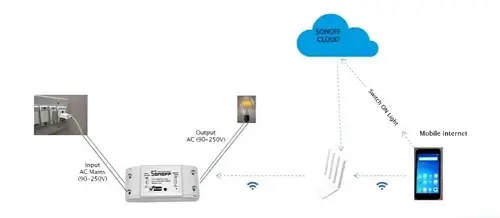Piezoelectric Pressure Sensors in IoT: Turning Force into Smart Data
Have you ever wondered how machines “feel” pressure or vibration? The answer often lies in something called a piezoelectric pressure sensor — a tiny but powerful device that transforms mechanical force into electrical signals. When paired with IoT (Internet of Things) systems, these sensors turn pressure into smart, actionable insights that industries rely on every second.
What Are Piezoelectric Pressure Sensors?
Piezoelectric pressure sensors are based on the piezoelectric effect, a property of certain crystals and ceramics that generate an electric charge when they’re compressed, stretched, or twisted. Simply put, when you apply pressure, they create electricity.
Unlike other sensors that rely on resistance or capacitance changes, piezoelectric sensors directly generate voltage, making them highly sensitive and ideal for detecting quick or dynamic pressure changes.
They’re not suited for measuring constant (static) pressure but are perfect for vibrations, pulsations, and rapid pressure variations, which makes them crucial in automotive, aerospace, and industrial IoT applications.
How They Work
- Pressure Applied: When force or pressure acts on the piezoelectric material, it produces an electric charge proportional to that pressure.
- Signal Conversion: This charge is converted into a measurable voltage.
- Data Transmission: Through IoT modules, the signal travels to cloud-based platforms or monitoring systems.
- Smart Insights: The collected data can trigger actions — like adjusting machinery, alerting operators, or predicting maintenance.
This ability to instantly translate force into usable data makes them one of the most dynamic types of electrical pressure sensors.
Types of Piezoelectric Pressure Sensors
- Quartz-Based Sensors: Use natural quartz crystals. Known for stability and precision in industrial systems.
- Ceramic-Based Sensors: Made from synthetic piezoelectric materials, often more affordable and durable.
- Polymer Film Sensors: Flexible and lightweight, used in wearable and medical applications.
Each type serves a different purpose but shares one core strength — responsiveness.
Real-World Applications in IoT
- Automotive Systems: Piezoelectric sensors are used in fuel injection systems to monitor rapid combustion pressures. When integrated with IoT, this data helps optimize engine performance and reduce emissions.
- Industrial Machinery: In manufacturing, these sensors detect vibrations or pressure spikes in pumps and compressors. IoT systems use this data for predictive maintenance, alerting teams before a failure occurs.
- Aerospace Monitoring: In aircraft, piezoelectric sensors track changes in engine pressure and vibration patterns. IoT dashboards collect and visualize this information for engineers in real time, improving safety and efficiency.
- Medical Devices: Some modern medical instruments use flexible piezoelectric films to track patient movement or respiration. With IoT connectivity, these signals can be analyzed remotely for better health monitoring.
Why They’re Ideal for IoT
- Fast Response: They react instantly to pressure changes, making them perfect for real-time monitoring.
- Compact Design: Small enough to embed in smart systems and wearables.
- Energy Efficiency: Since they generate voltage directly, they often require minimal power.
- Durability: Function well in high-pressure, high-temperature environments.
When integrated with IoT, these sensors help create smarter, self-adjusting systems that don’t just collect data — they act on it.
Final Thoughts
Piezoelectric pressure sensors are a reminder of how physics meets technology in the most practical way. They take something as invisible as force and turn it into data that IoT platforms can understand, analyze, and use.
Whether it’s a car engine fine-tuning itself or an industrial valve adjusting pressure on its own, these sensors are quietly shaping the future of automation.
In the ever-growing IoT landscape, piezoelectric pressure sensors prove that sometimes the smartest systems start with the simplest principles — in this case, a crystal that knows how to react when pressed.




